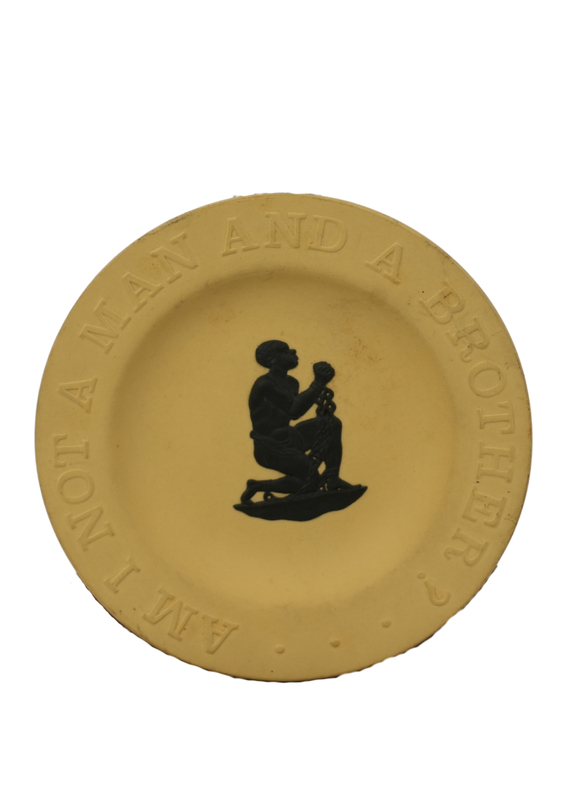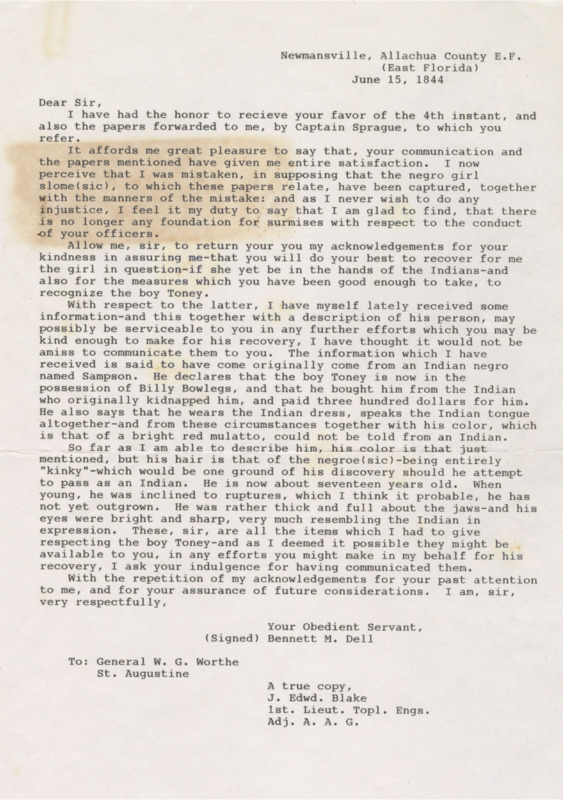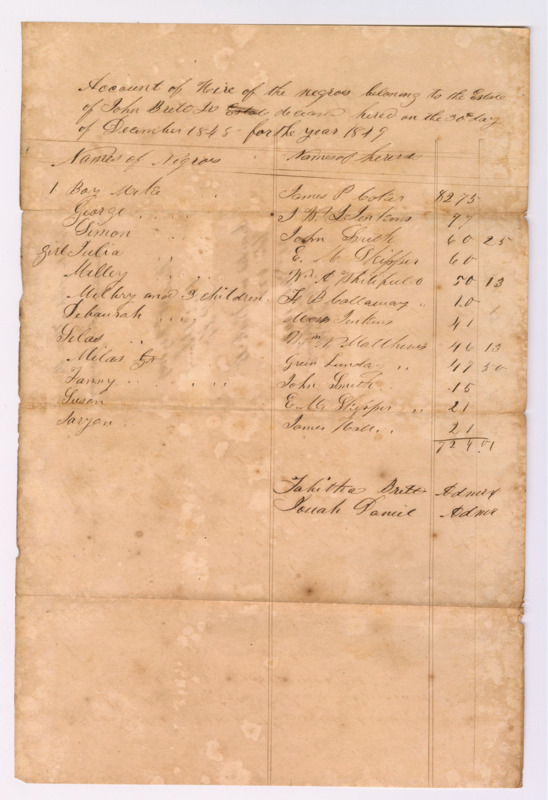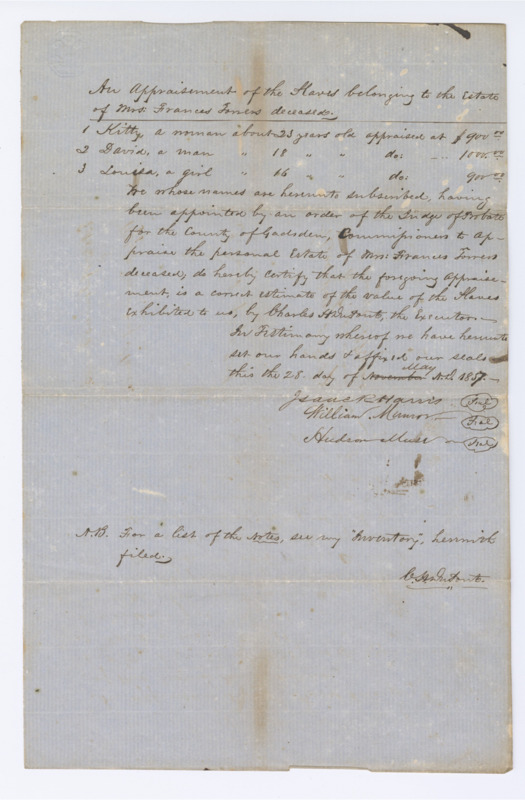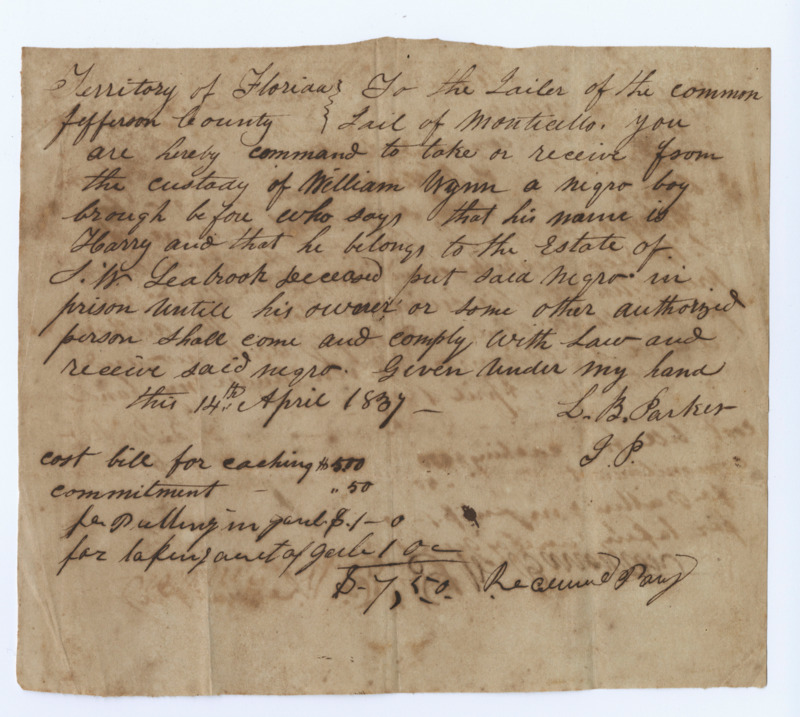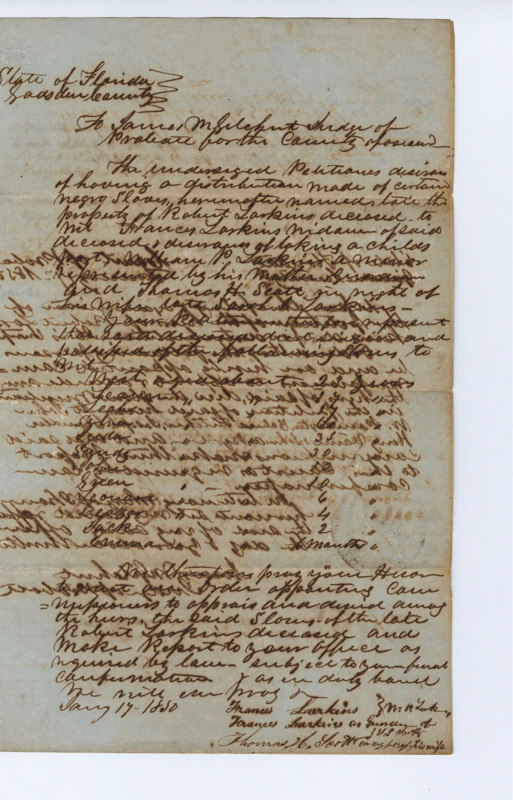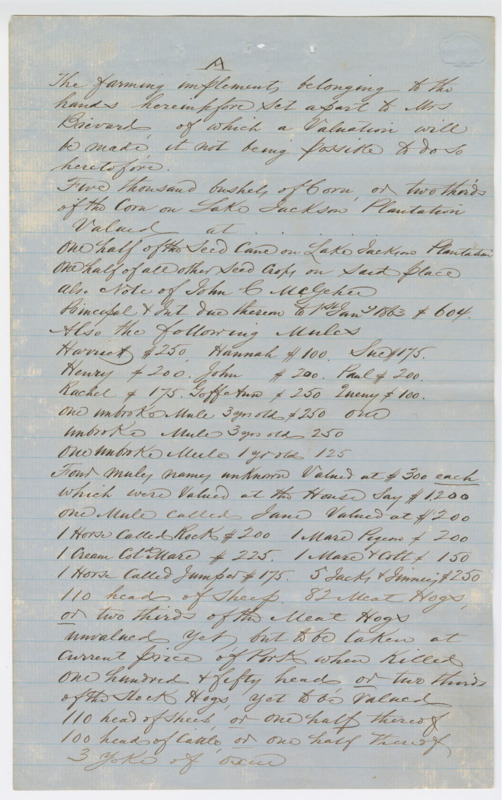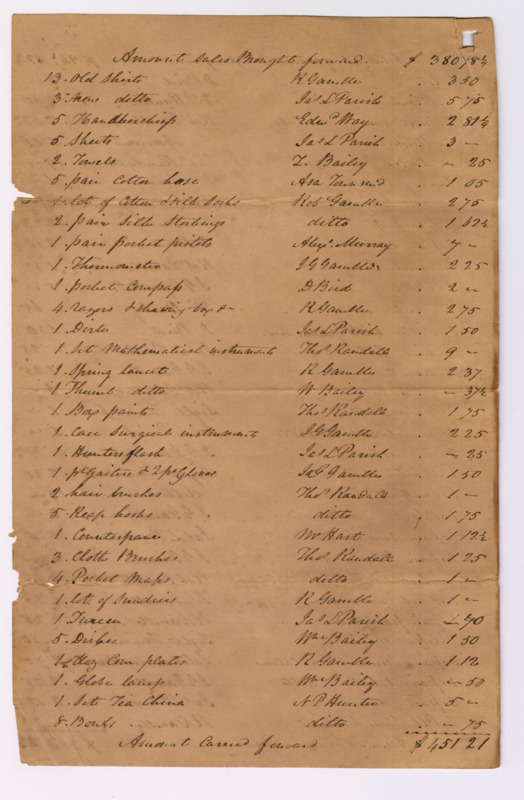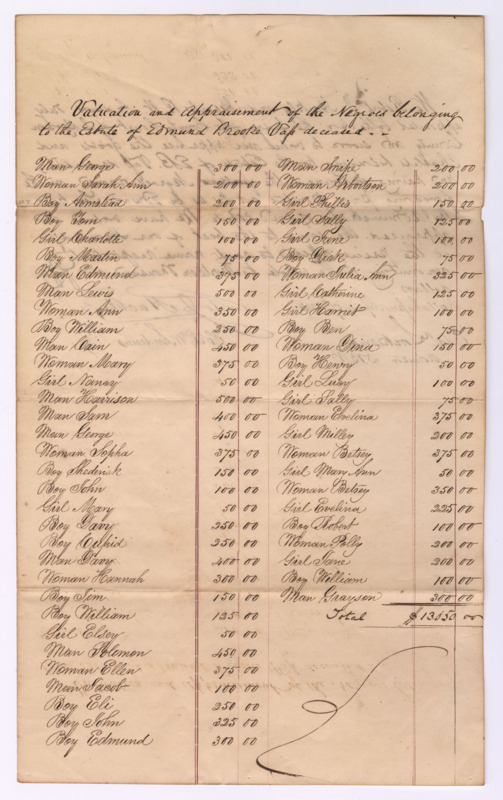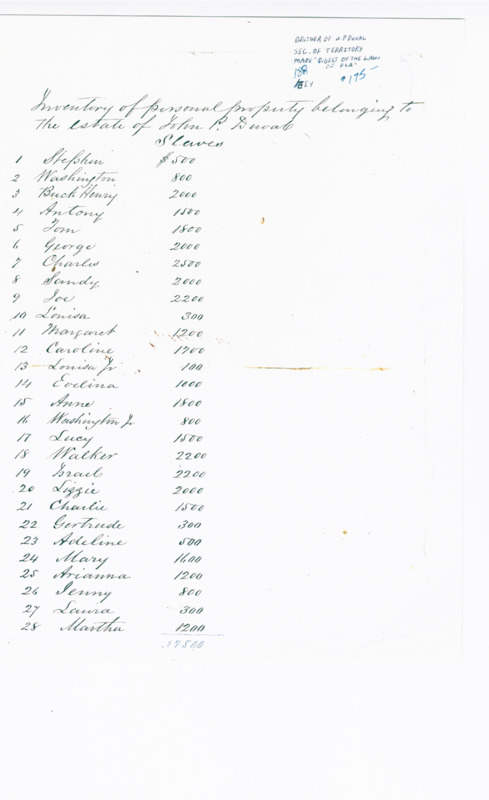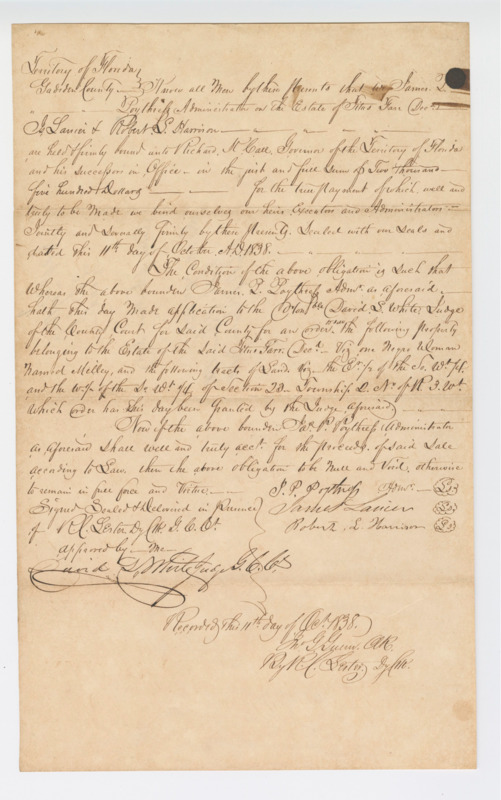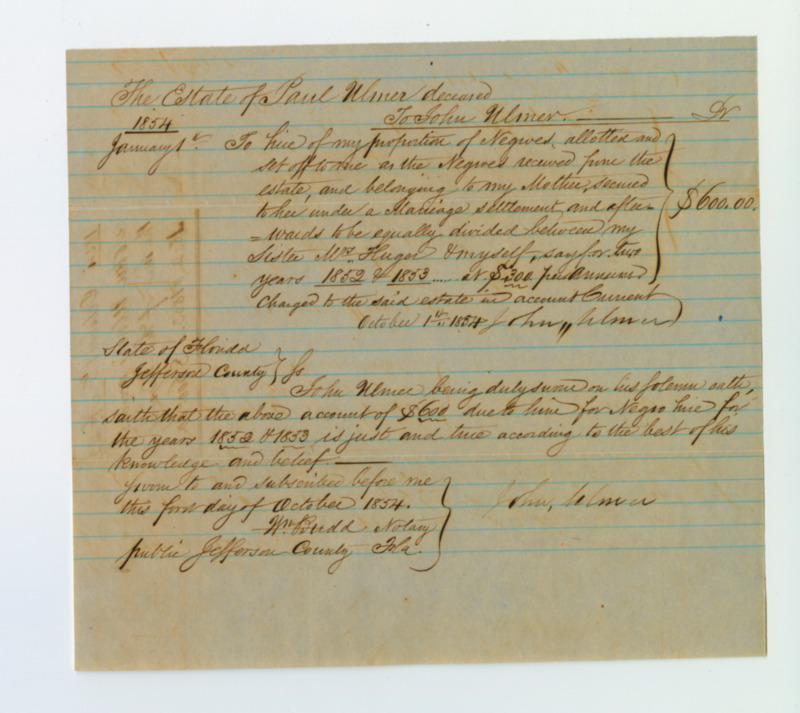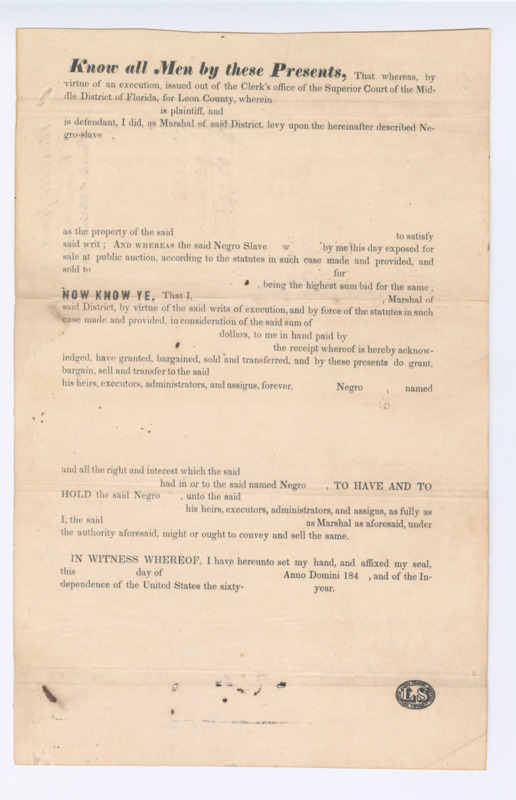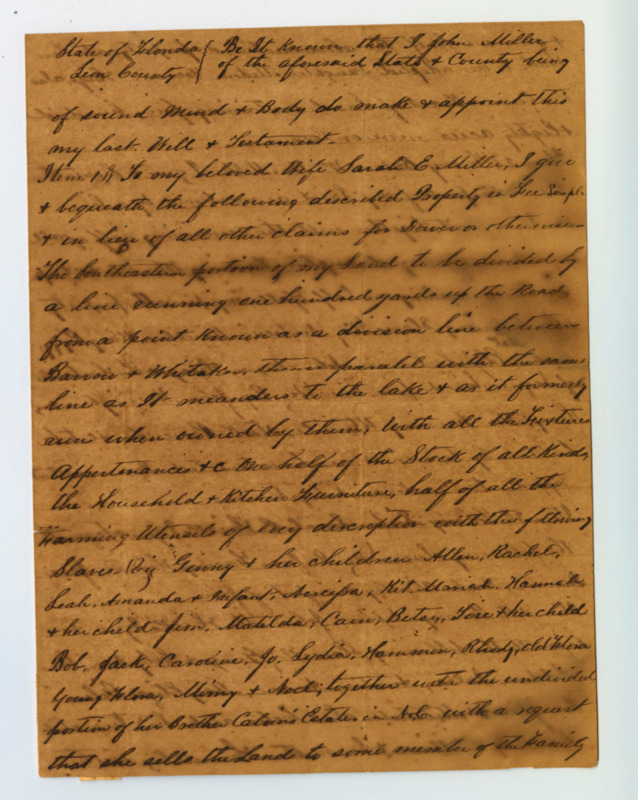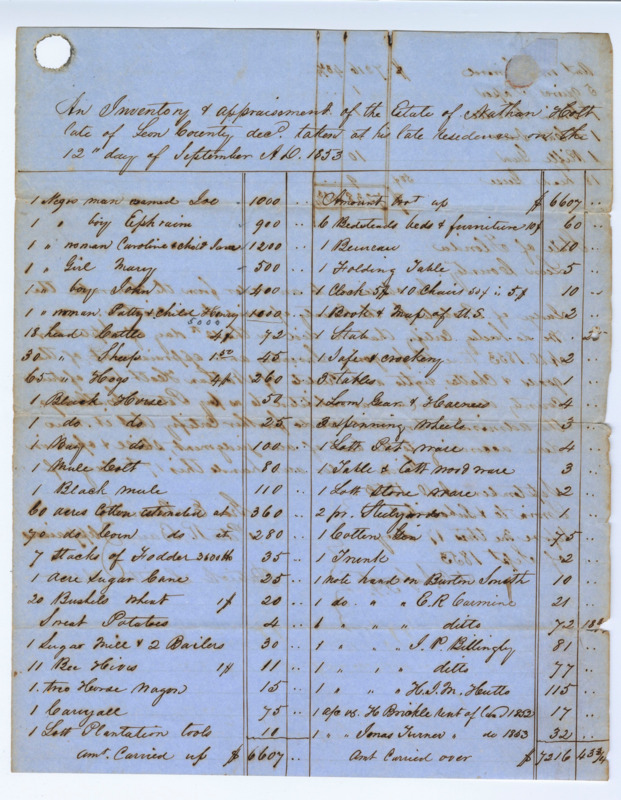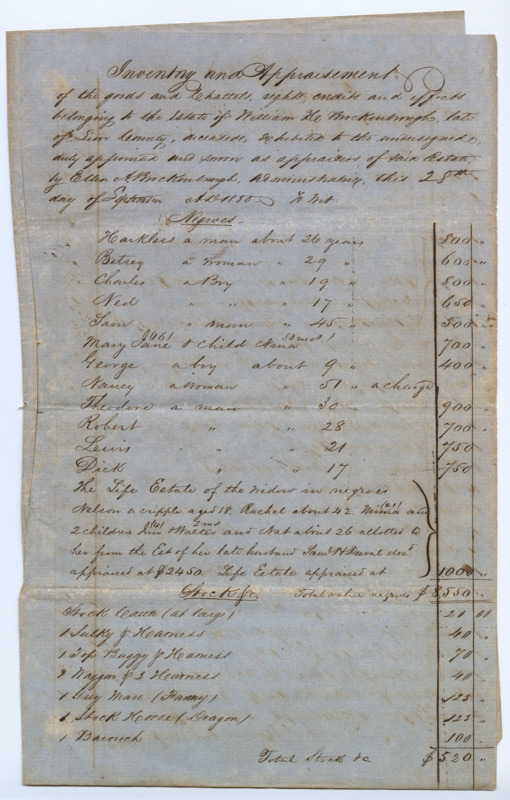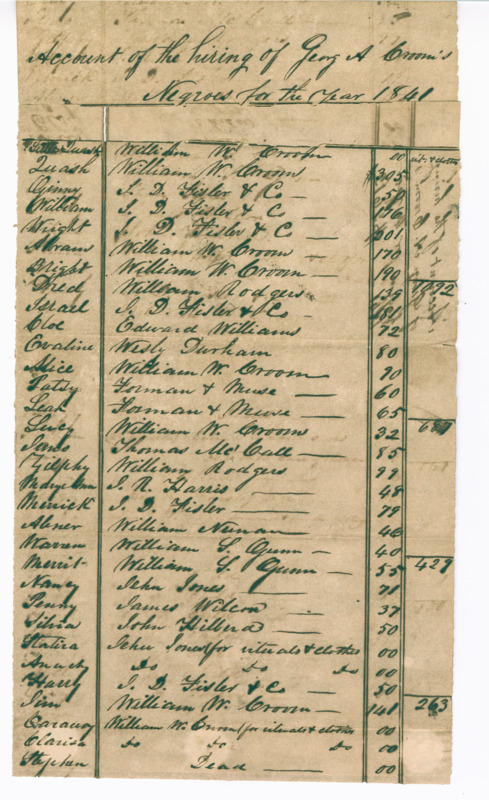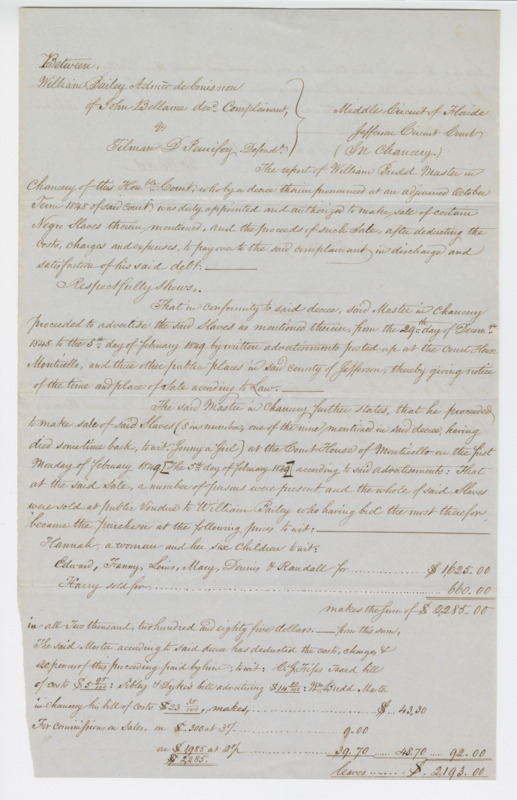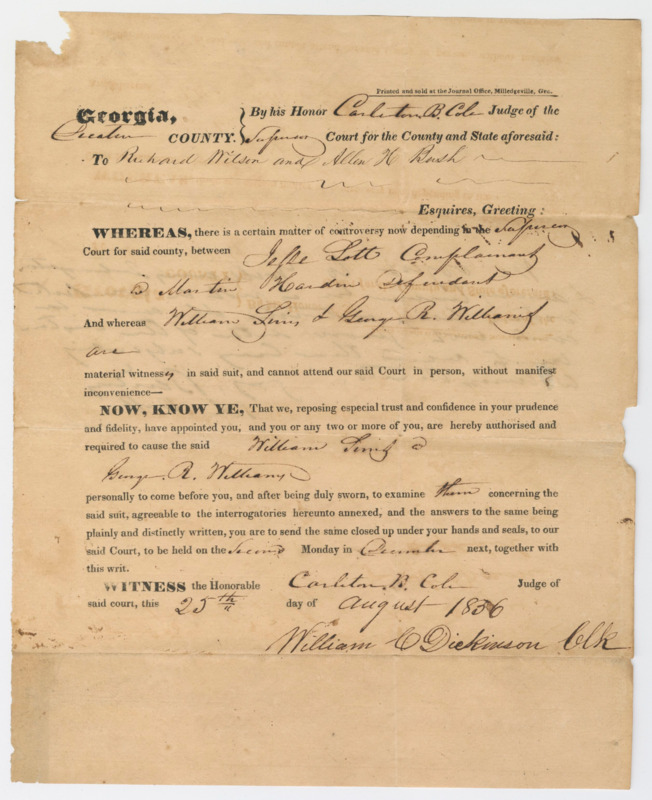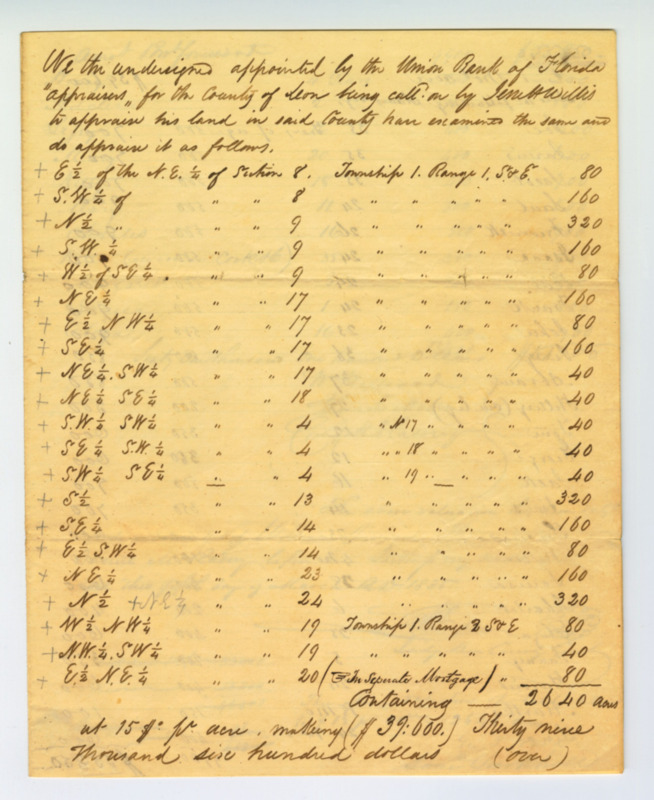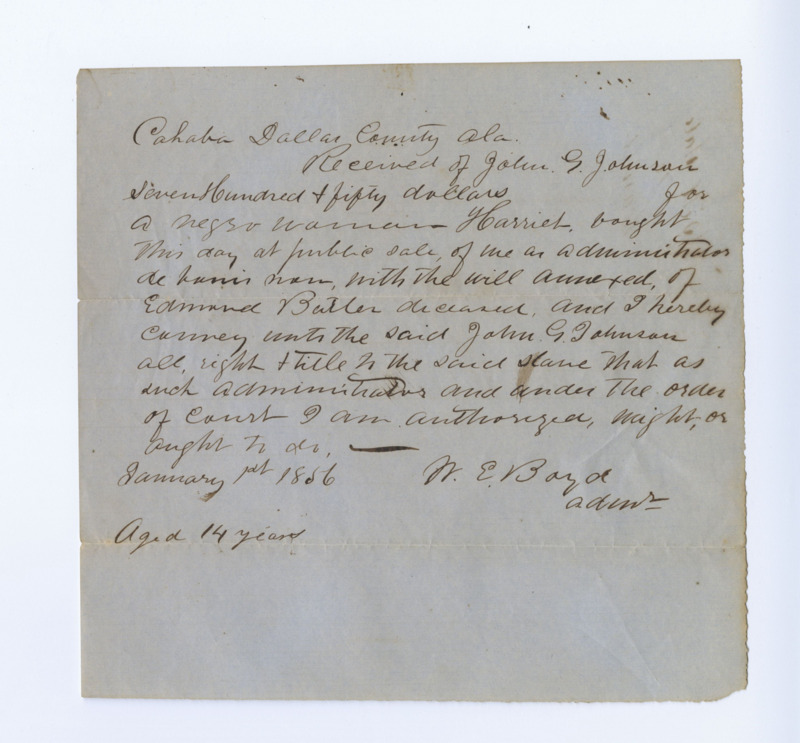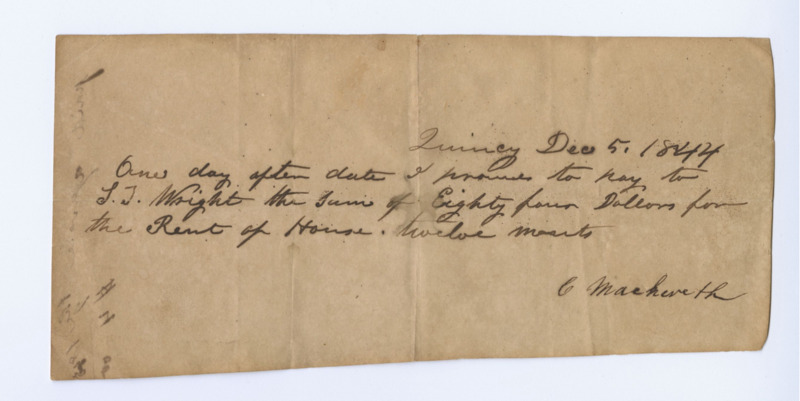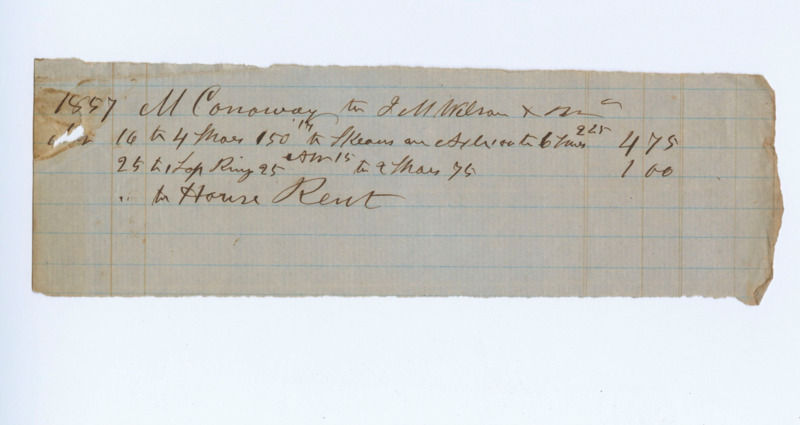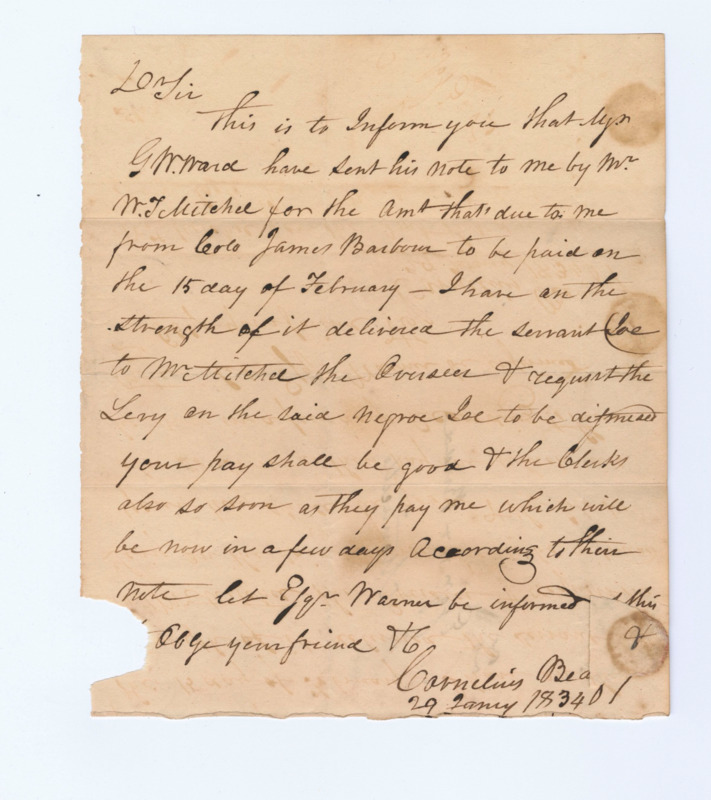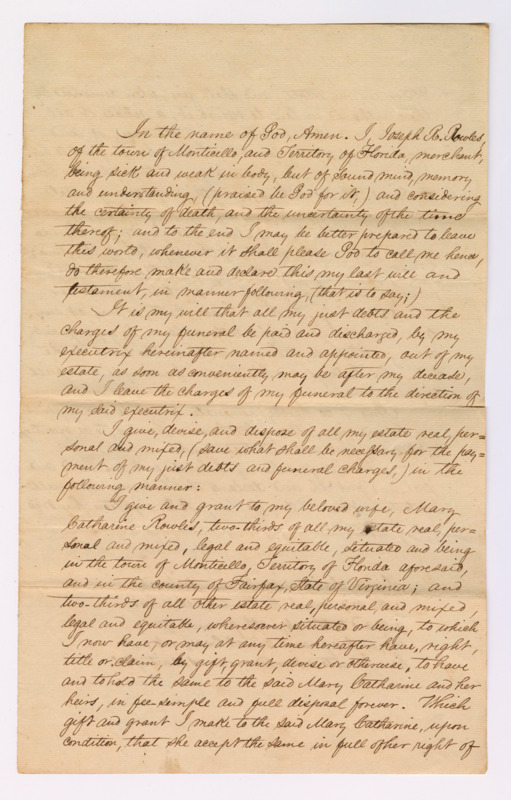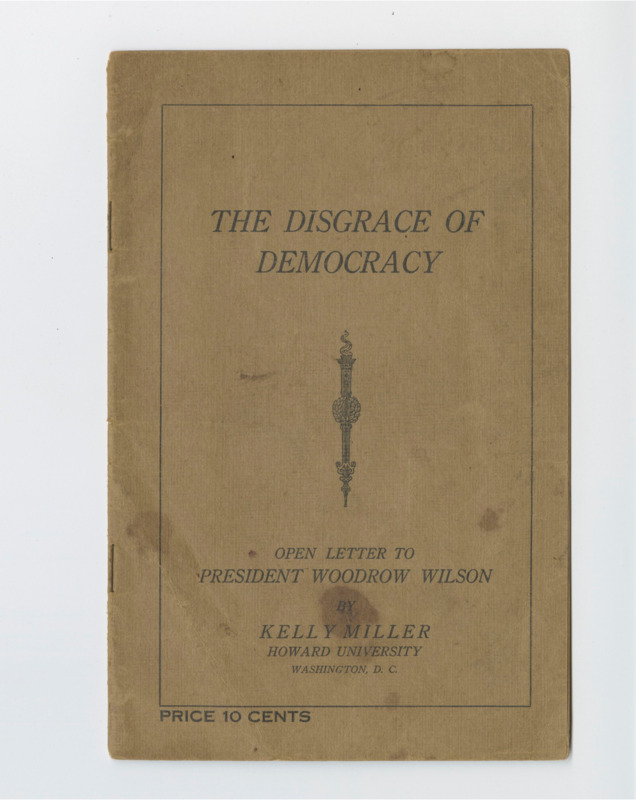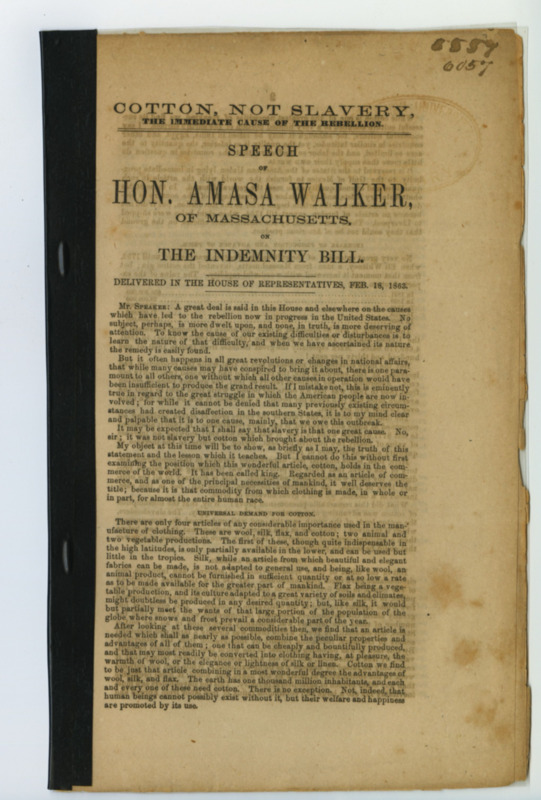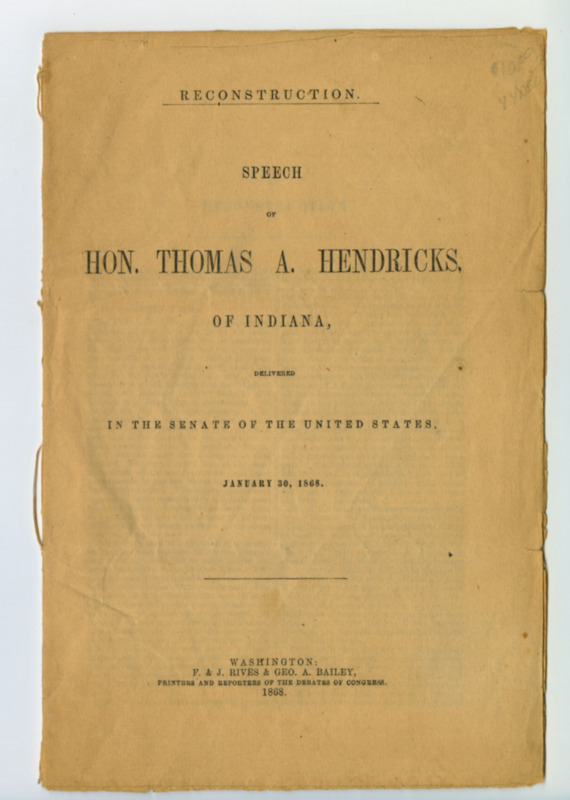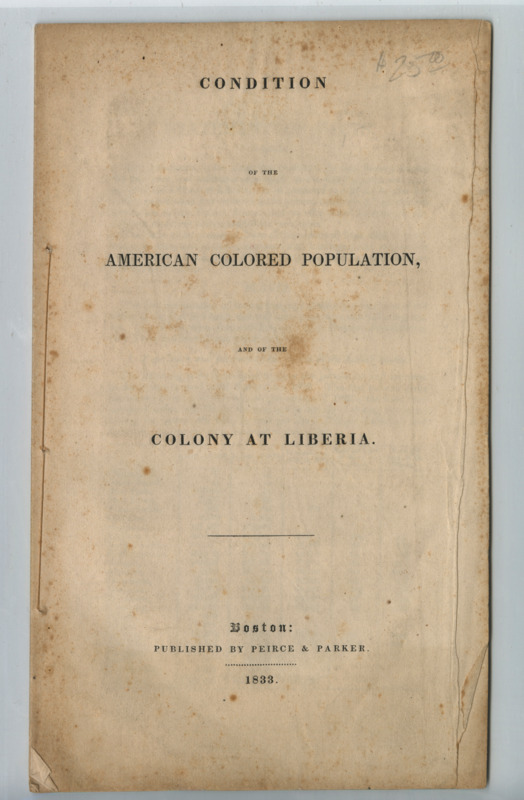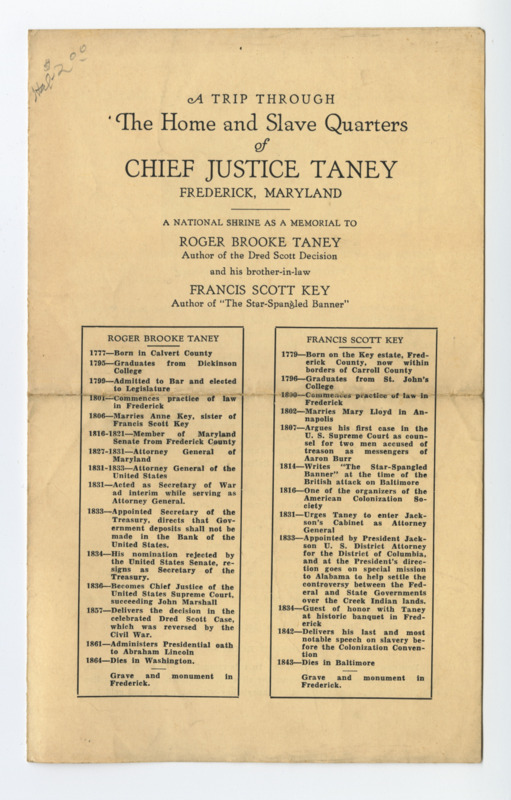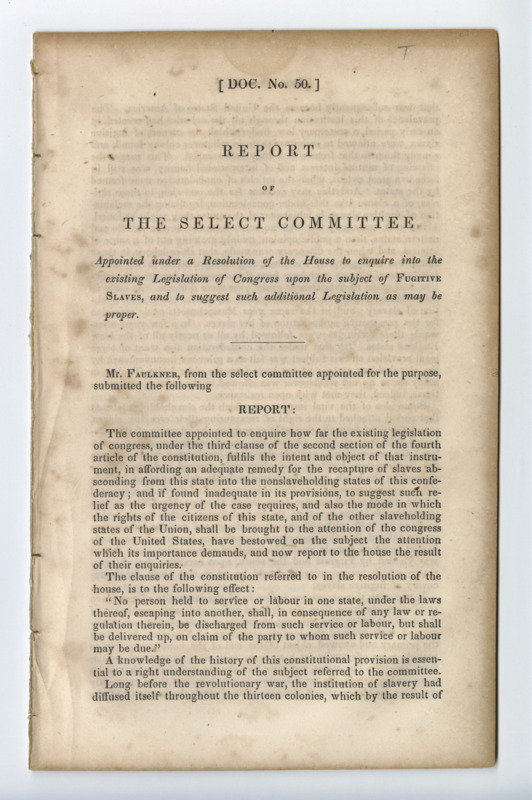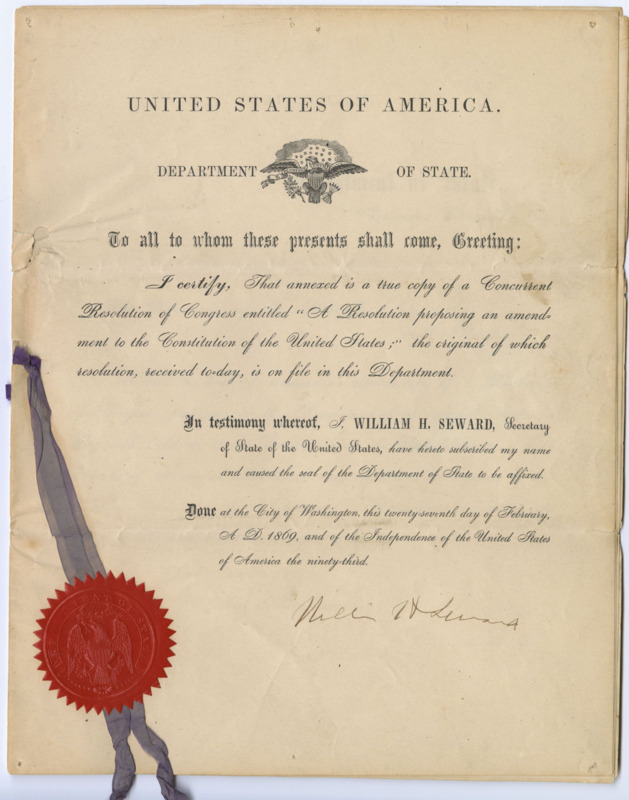Reading the Lives Slavery Tried to Erase
The Rare Slavery Papers collection offers a window into the daily realities of slavery, recorded in documents that range from personal letters to court filings and estate inventories. These materials do not just tell us that slavery existed—they show how it operated, how it shaped lives, and how people navigated its restrictions. In letters, we encounter instructions, requests, and negotiations; in estate papers, the cold arithmetic of valuing human lives; in legal records, struggles over freedom and property; and in literary works, the public debates that framed the moral and political questions of the time. Together, these documents provide both evidence of oppression and traces of resistance, offering a detailed and tangible record of the people and systems that shaped this era.
FAMU Slavery Papers
Discover the full collection of papers associated with slavery in the American South and other rare documents and objects at the Meek-Eaton Black Archives Collection, The Florida A&M University.
Explore Full Collection →Explore Correspondences
At first, these correspondences seem ordinary—notes about labor, payments, or property—but closer reading reveals the human pulse beneath the paper. These letters capture negotiations, instructions, and the anxieties of life under bondage. Through them, we encounter people navigating power and survival, their voices asserting agency in a world designed to deny it.
Want to Dive Deeper?
Explore the contents of this letter sent by Bennett M. Dell to General W.G. Worthe after the Second Seminole War in 1844 in the page linked below.
I want to learn moreExplore Estate Papers
These subset of documents usually speak in columns and figures. Wills, inventories, and estate records place men, women, and children on the page beside livestock and furniture, their lives reduced to appraisals in the language of property. The precision is chilling: a human being accounted for in the same breath as a table. Yet these records, meant to erase individuality, now serve another purpose. Today they allow descendants and historians to recover names, trace kinship, and rebuild stories that the arithmetic of slavery tried to silence.
On the right, you can discover some of the estate papers housed at The Florida A&M University's Meek-Eaton Black Archives. Click on each document image to access the full artifact.
Explore Legal Documents
Many of the legal proceedings showcased center on ownership—disputes over the sale, trade, or inheritance of enslaved people. They show how deeply the legal system was invested in protecting slavery as property, codifying human lives into contracts and transactions. Yet scattered among these records are moments of challenge: an enslaved person petitioning for freedom, cases where the law was bent—if briefly—toward recognizing agency. Together, they reveal a legal system designed to uphold bondage, but also one that occasionally became a fragile arena for contesting it.
On the right, you can discover some of the leagal documents associated with slavery in the American South housed at The Florida A&M University's Meek-Eaton Black Archives. Click on each document image to access the full artifact.
Explore Literary Works
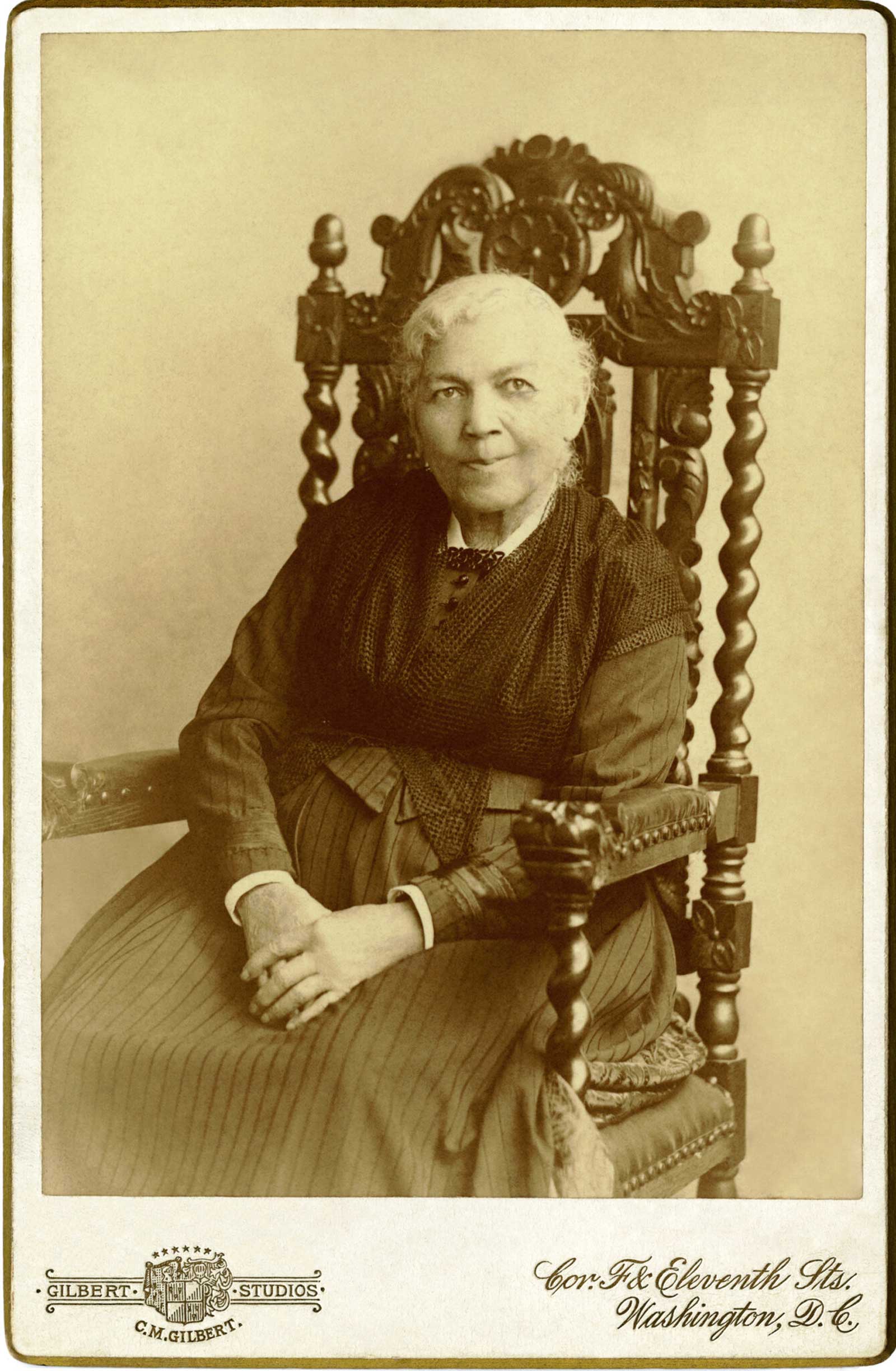
Provided below are a set of speeches and publications including some of the earliest written anti-slavery works.
-
The Disgrace of Democracy: Open Letter to President Woodrow – A fearless condemnation of segregation and discrimination, demanding accountability from national leadership.
-
Amasa Walker, Address on the Indemnity Bill – Linked financial policy to the moral reckoning of slavery, raising early questions of reparative justice.
-
Thomas A. Hendricks, Senate Speech – Pushed back against Reconstruction reforms, invoking states’ rights to resist protections for freed people.
-
Condition of American Colored Population and the Colony at Liberia – Explored the promise and pitfalls of colonization, weighing freedom against exile.
-
A Trip Through the Home and Slave Quarters of Chief Justice Taney – Offered a revealing look at the household of the man behind the Dred Scott decision, exposing slavery’s reach into the highest courts of law.
-
Report of the Select Committee (Inquiry on Fugitive Slave Law) – Documented the conflicts over the Fugitive Slave Act, highlighting how slavery fractured the nation.
-
A Resolution Proposing an Amendment to the Constitution of the United States – Part of the legislative path to the 13th Amendment, marking the formal abolition of slavery.
Credits
<Insert Name>, <Insert Title>, Meek-Eaton Black Archives
[If more than one person worked on the contents of this page, please include all contributors' names]
How to Cite This Source
"Title," in HCAC Beta, https://hcacbeta.org/urislug [accessed Month, Day, Year]

